Search Results
Back to JTS Torah Online's Main page
What Do the Dead Know?
May 3, 2024 By Jonathan Boyarin | Commentary | Aharei Mot
This week’s Torah portion begins with the words “after the death,” referring to the death of Aaron’s sons Nadab and Abihu. I appreciate the chance to contribute this week’s commentary, since I’m currently teaching a course titled “Death, Dying, and the Dead” at JTS. Much of the course is about Jewish death rituals, but I also aim to convince my students that Jewishness per se is inconceivable without some notion of the continuing presence of the dead in the world of the living. The tradition for the most part seems to take this continued presence for granted, though questions arose about exactly how it manifests.
Read More
Making God Holy
Apr 28, 2023 By Amram Altzman | Commentary | Aharei Mot | Kedoshim
Parashat Kedoshim, the second of the two parashiyot that we read this week, ends just as it begins: with an imperative for us, the Children of Israel, to be holy. Our parashah opens with, “קדשים תהיו/You shall be holy,” and the penultimate verse tells us that, “והייתם לי קדשים/You shall be holy to Me, for I God am holy, and I have set you apart from other peoples to be Mine” (Lev. 20:26). Although almost identical, our parashahends with the idea that we are not just holy in general, but are specifically designed as holy to God. How, then, are we supposed to not just be holy, but holy to God?
Read More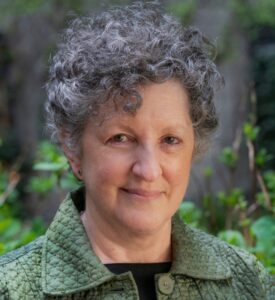
Who is the Stranger?
Apr 29, 2022 By Linda S. Golding | Commentary | Aharei Mot
What a great invitation, I thought, to write a d’var Torah on Aharei Mot! The opening verses that include “Tell your brother Aaron that he is not to come at will into the Shrine behind the curtain . . . lest he die” came immediately to mind. The directive to be mindful and thoughtful when entering God’s presence and the presence of others certainly aligns with a chaplain’s way of being. When entering a hospital room, for example, I know that the Shekhinah, God’s healing presence, is at the head of the patient’s bed. Holiness is already in the room, and I must be prepared to pay attention.
Read More
The Palace of Torah Expanded: 15 Years Later
Apr 23, 2021 By Daniel Nevins | Commentary | Aharei Mot | Kedoshim
For many modern readers, engaging with Torah presents a paradox. Biblical and rabbinic voices reaching us from the distant past are like starlight emitted millennia ago—brilliant and often shockingly current, but also artifacts from light sources that may have dimmed or even expired. This paradox can be constructive, drawing modern readers out of our own cultural assumptions, challenging us to notice wonders that we might otherwise miss. The Torah’s poetry, its stirring demands for justice, and its vast system of devotional rites prime us for faith and sanctity. And when we encounter a Torah text that rings false or hurtful, we may use that encounter to clarify our own understanding, to articulate our community’s sacred values.
Read More
Holiness Through Restraint
May 1, 2020 By Joshua Rabin | Commentary | Aharei Mot | Kedoshim
I am a rabbi who works with teenagers, and you cannot talk to adults about teenagers without the conversation quickly focusing on smartphones and social media. And it quickly turns depressing.
Read More
The Great Escape
May 3, 2019 By Marc Gary | Commentary | Aharei Mot | Yom Kippur
Last year, the eminent Bible scholar Robert Alter completed a project that only a handful of people have ever even attempted: a brand-new translation of and commentary on the entire Tanakh (Hebrew Bible). The work comprises more than 3,000 pages and took him almost 25 years to complete. Professor Alter is rightfully the subject of much admiration for this outstanding achievement, but one of his predecessors did not fare as well.
Read More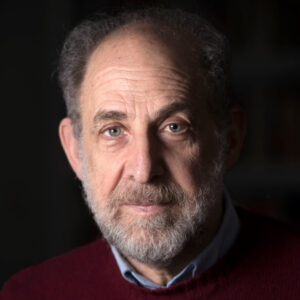
How to Be Holy
Apr 27, 2018 By Raymond Scheindlin | Commentary | Aharei Mot | Kedoshim
This week, we read two parashiyot from Leviticus: Aharei Mot and Kedoshim. Taken together, they cover five clearly defined topics. Aharei Mot deals with the rituals of the high priest on Yom Kippur; regulations governing the slaughter of animals for food and sacrifice; and the prohibition of various sexual relations, especially incest. This last subject is resumed at the end of Kedoshim. Between the two discussions of sexual relations is the famous Chapter 19, which opens Kedoshim.
Read More
Separation and Union: The Poles of Holiness
May 5, 2017 By Stephen A. Geller | Commentary | Aharei Mot | Kedoshim
These combined parashiyot are complex in their structure and content, yet a careful examination of these chapters reveals a striking and powerful theological insight. In terms of Bible scholarship, they extend across a major divide in the priestly literature: Leviticus 16 describes the detailed rites of yearly atonement that eliminated the taint of sinfulness from the priesthood, shrine, and people. In essence, it is a kind of re-creation of the initial state of purity of the Tabernacle on the day it was dedicated, as described in Leviticus 9-10. The link between atonement and dedication is made subtly, by the reference at the beginning of Leviticus 16 to the tragic deaths of Aaron’s sons, Nadab and Abihu, at the dedication of the Tabernacle, as recounted in Leviticus 10.
Read More
Leftover Scraps
May 5, 2017 By Julia Andelman | Commentary | Aharei Mot | Kedoshim | Shavuot
The Torah exhorts us in this week’s parashah: “When you reap the harvest of your land, you shall not reap all the way to the edges of your field, or gather the gleanings of your harvest…you shall leave them for the poor and the stranger” (Lev. 19:9-10). This mitzvah plays out in beautiful narrative form in the Book of Ruth, read on the upcoming holiday of Shavuot. But Ruth is the exception; she is rescued from her destitute state by Boaz, the owner of the field where she gleans, who marries her. What of all those who remained gleaners—whose survival depended on the daily toil of gathering other people’s leftovers?
Read More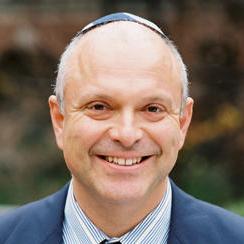
Songs of Joy, Counterpoints of Tragedy
May 6, 2016 By Jonathan Lipnick | Commentary | Aharei Mot
Perhaps the Torah speaks now, in the spring of atonement, because we know so well our songs of joy carry with them counterpoints of tragedy.
Why should we be reading about Yom Kippur around the time Pesah is celebrated? These two holidays seem so different, and yet, in her poem “Aharei Mot,” Ruth Brin was on to something, leading me to wonder: How was I to understand the interrelationship between Yom Kippur and Pesah? How was I to take Ruth Brin’s instructive words to heart?
Read More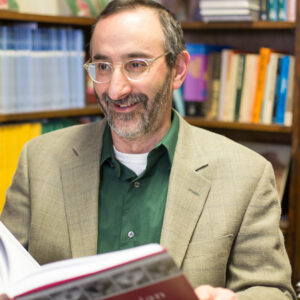
Where Is Authority Found?
May 6, 2016 By Benjamin D. Sommer | Commentary | Aharei Mot
People familiar with the dietary laws of Judaism know that meat from an animal that died a natural death or was torn apart by wild beasts is not kosher. This is stated explicitly in the Torah. Exodus 22:30 reads, “You shall be my holy people: you may not eat meat torn by beasts in the field; you should throw it to dogs.” (The Hebrew word for “torn by beasts”—terefah—refers specifically to torn flesh in biblical Hebrew.)
Read More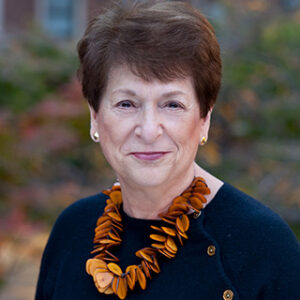
The Saint and the Zohar
May 1, 2015 By Vivian B. Mann <em>z”l</em> | Commentary | Aharei Mot | Kedoshim
We often think of Jewish life in Spain in terms of the massacres of 1391 and the Spanish Expulsion in 1492. But the art made for the Church between those two dates presents a more nuanced view of Christian–Jewish relations.
Read More
A Holy Tongue: Kedushah and the Ethics of Speech
May 1, 2015 By Marc Gary | Commentary | Aharei Mot | Kedoshim
A few years ago, my wife and I attended a retreat at Camp Ramah Darom in northern Georgia. The scholar-in-residence for the Shabbat was Rabbi Joseph Telushkin, a widely respected author of popular books on Jewish literacy and Jewish ethics. He suggested that all of us in attendance—approximately 100 adults—commit to one of the most difficult challenges we had ever faced: refrain from talking about other people for the duration of Shabbat. That is to say, for an entire day, we should speak not a word of gossip. I will not tell you whether we succeeded or failed in that challenge, but I will tell you that it was a very long 25 hours indeed.
Read More
Sacrifice and Humility
Apr 11, 2014 By Matthew Berkowitz | Commentary | Aharei Mot
The Torah reading opens with God speaking to Moses in the aftermath of the death of Aaron’s two sons, Nadav and Avihu, who “drew too close to the presence of the Lord” (Lev. 16:1). But most immediately, as is the case in the aftermath of any trauma, we want to learn how to avoid another tragic “accident.”
Read More
Embracing Life in the Face of Death
Apr 17, 2013 By Matthew Berkowitz | Commentary | Aharei Mot | Kedoshim | Yom Hazikaron-Yom Ha'atzma'ut
This past week, we commemorated State of Israel Memorial Day (Yom Hazikkaron) and State of Israel Independence Day (Yom Ha’atzma’ut). The juxtaposition of these two observances is jarring. Living in Israel, one feels how mourning permeates every moment of Yom Hazikkaron: from the piercing siren that sounds around the entire country at 8:00 p.m. to the mournful songs played on Israeli radio; from the Yizkor (memorial service) stickers with the Israeli plant known as dam hamakabim (the blood of the Maccabees) to the throngs of Israeli citizens flooding Mount Herzl Cemetery. At the close of this sobering day, transition ceremonies give way to the festivities of Yom Ha’azma’ut: fireworks decorate the night sky and festive barbeques fill the landscape of every square meter of Israeli parks.
Read More
Getting Out of Your Own Way
Apr 16, 2013 By Abigail Treu | Commentary | Aharei Mot | Kedoshim
“You shall not . . . place a stumbling block before the blind. You shall fear your God. I am the Lord.” Taken literally, this is a verse about respecting the disabled. Taken figuratively—as the Rabbis give us ample precedent and license to do—it is about all of us.
Read More
The Treasure of Inner Wisdom
May 5, 2012 By Abigail Treu | Commentary | Text Study | Aharei Mot | Kedoshim
The very sage pediatrician who examined my newborn son, my firstborn, asked me what his temperament is like. My husband and I exchanged looks, and out poured our utter dismay at how to handle our colicky little treasure. I will never forget the doctor’s words of advice: You know what to do. Listen to your gut instincts. You are already wise.
Read More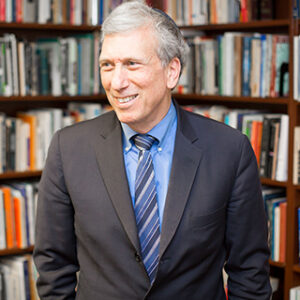
Filling Life with Life
May 5, 2012 By Arnold M. Eisen | Commentary | Aharei Mot | Kedoshim
“The deeds of the ancestors are a sign for their descendants,” said the medieval commentator Nahmanides. Sometimes it seems that the weekly Torah portion captures the situation of our generation with remarkable prescience. So it is with Aharei Mot-Kedoshim.
Read More
Let All Who Are Hungry Come and Eat
Apr 16, 2011 By Andrew Shugerman | Commentary | Text Study | Aharei Mot | Shabbat Hagadol
One of my favorite customs for Shabbat Hagadol is to read the Maggid section of the Passover Haggadah in advance of the first seder.
Read More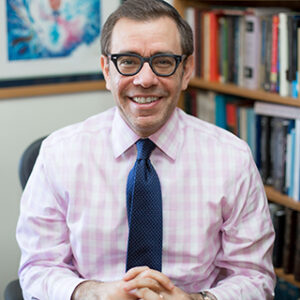
Healthy (and Maybe Even Holy) Ambivalence
Apr 24, 2010 By David Hoffman | Commentary | Aharei Mot | Kedoshim
Building identity is complicated and sometimes painful work. This is true both on an individual level and when it comes to nations. What makes thinking about identity even more complicated is the fact that identity is really never completely “formed.” Sure, a national identity should have core commitments. But I would suggest that we shift our understanding of identity from something that is fixed to a subjective process by which one group comes to recognize itself as being different from other groups. Understood in these terms, identity is dynamic—always emerging and continually being transformed over time.
Read MoreSUBSCRIBE TO TORAH FROM JTS
Our regular commentaries and videos are a great way to stay intellectually and spiritually engaged with Jewish thought and wisdom.




